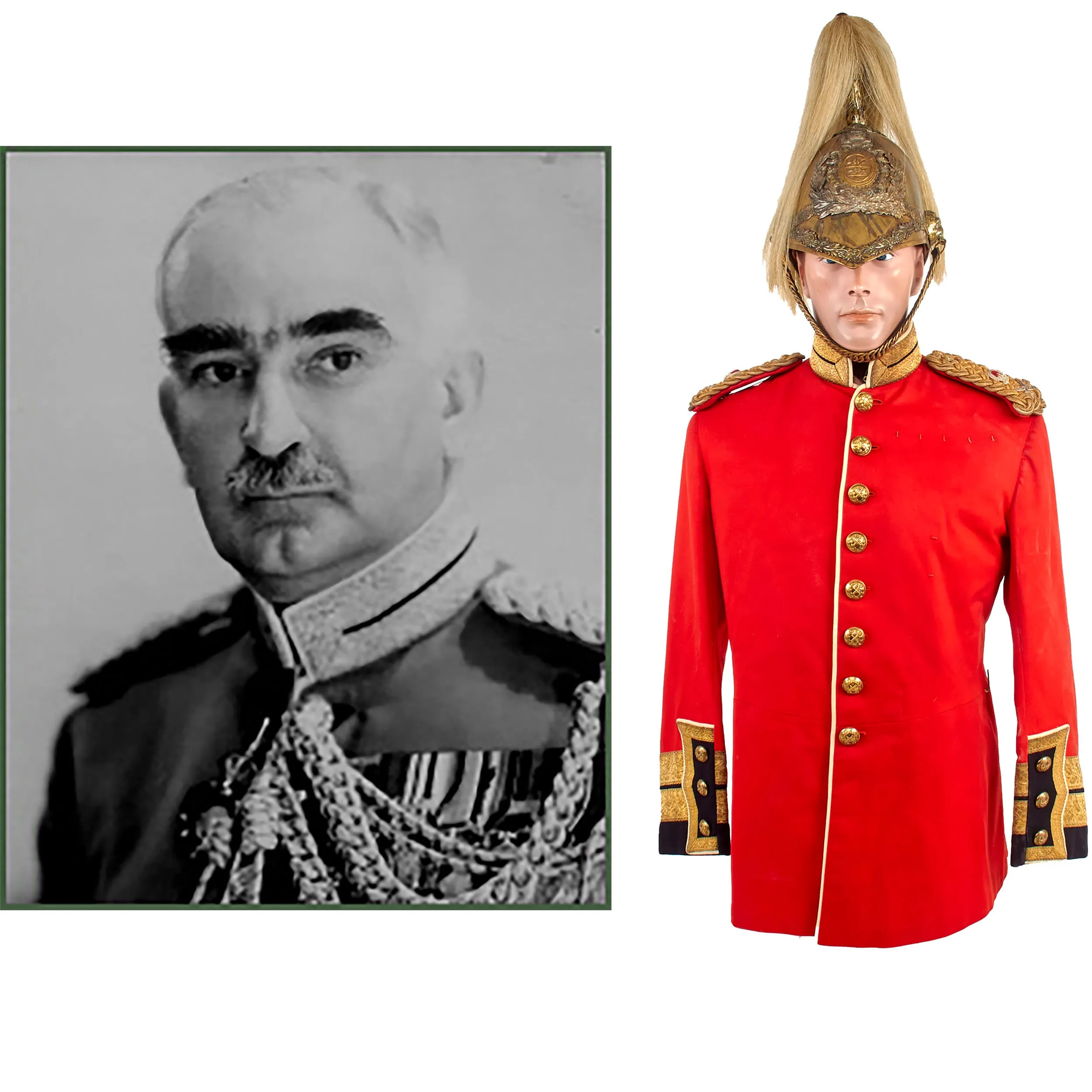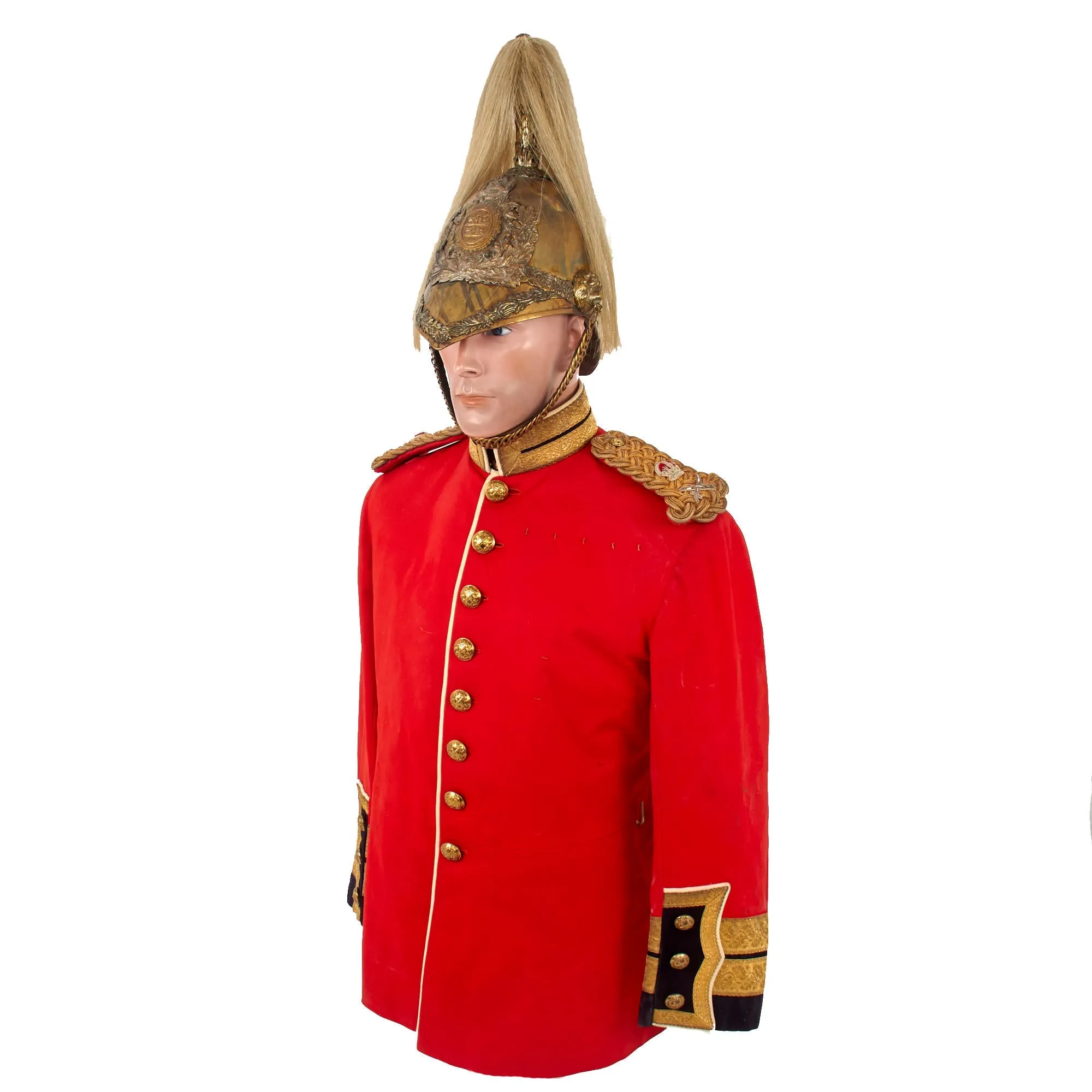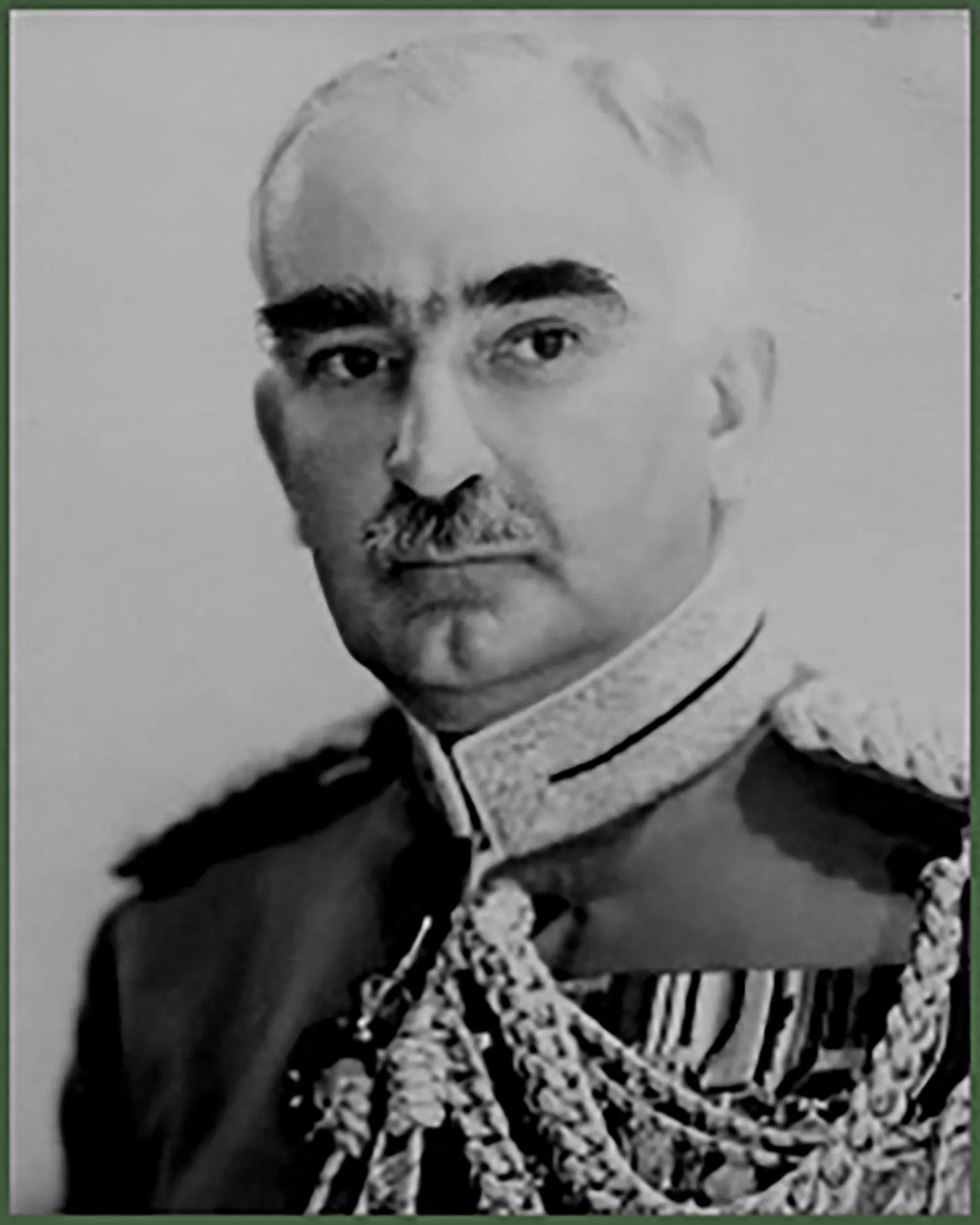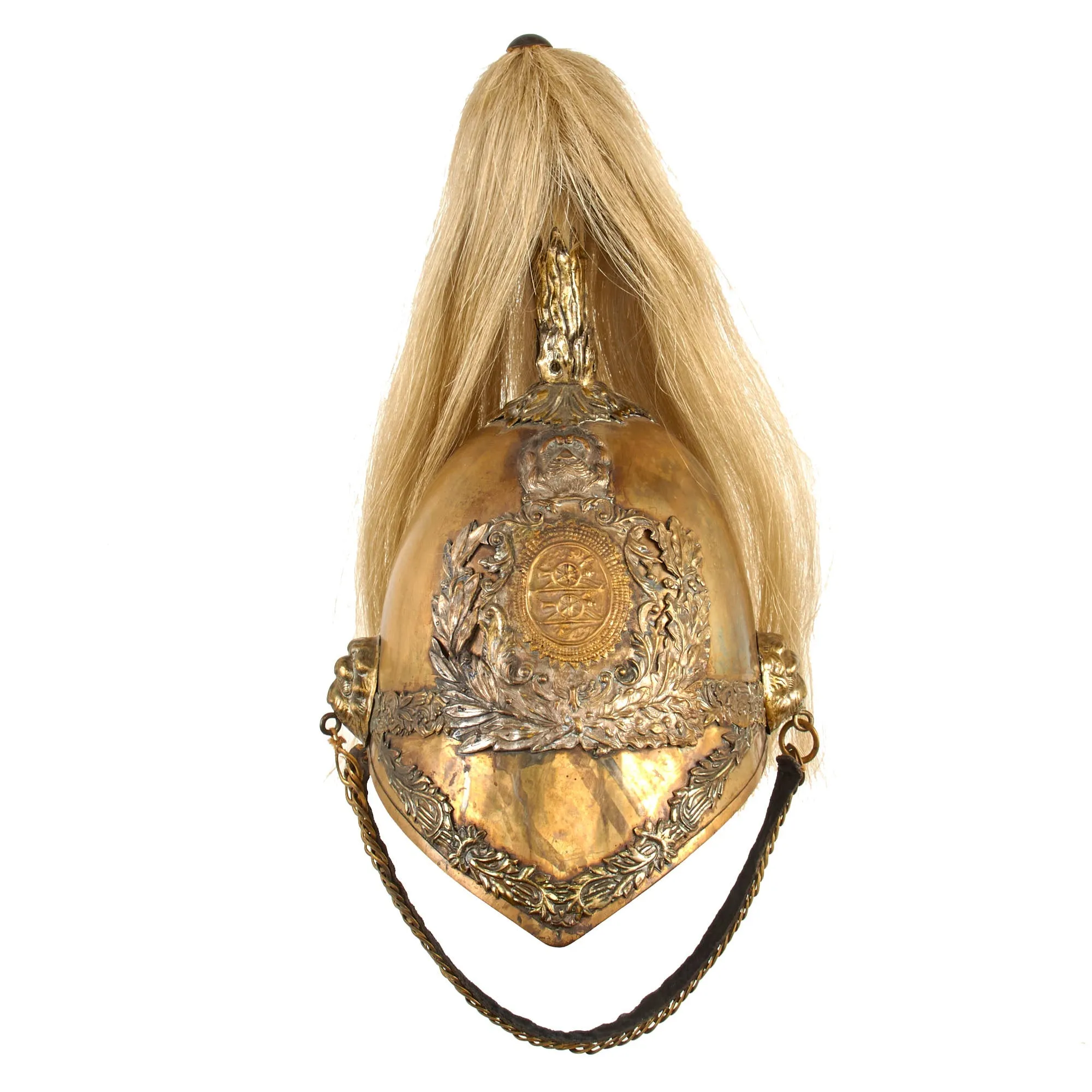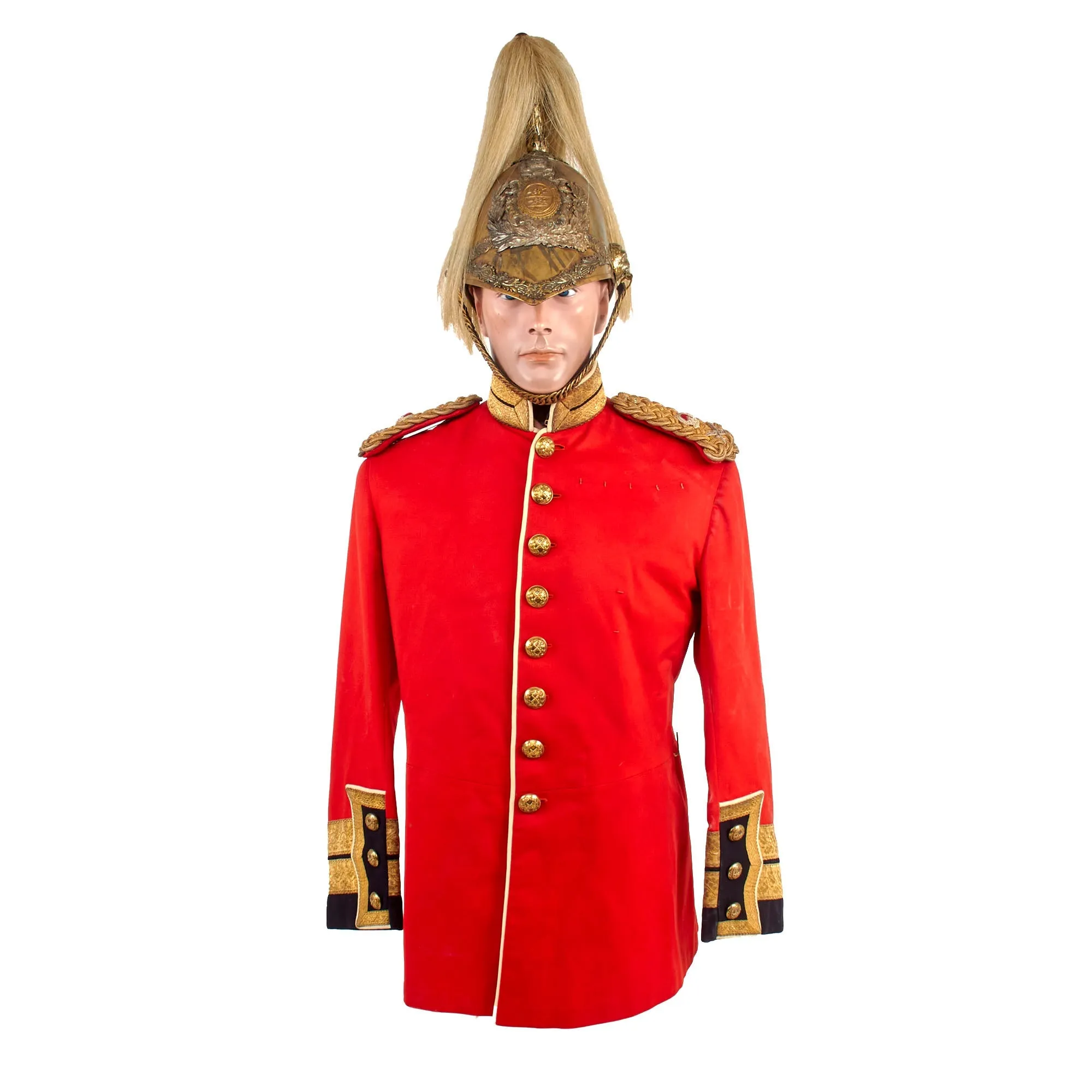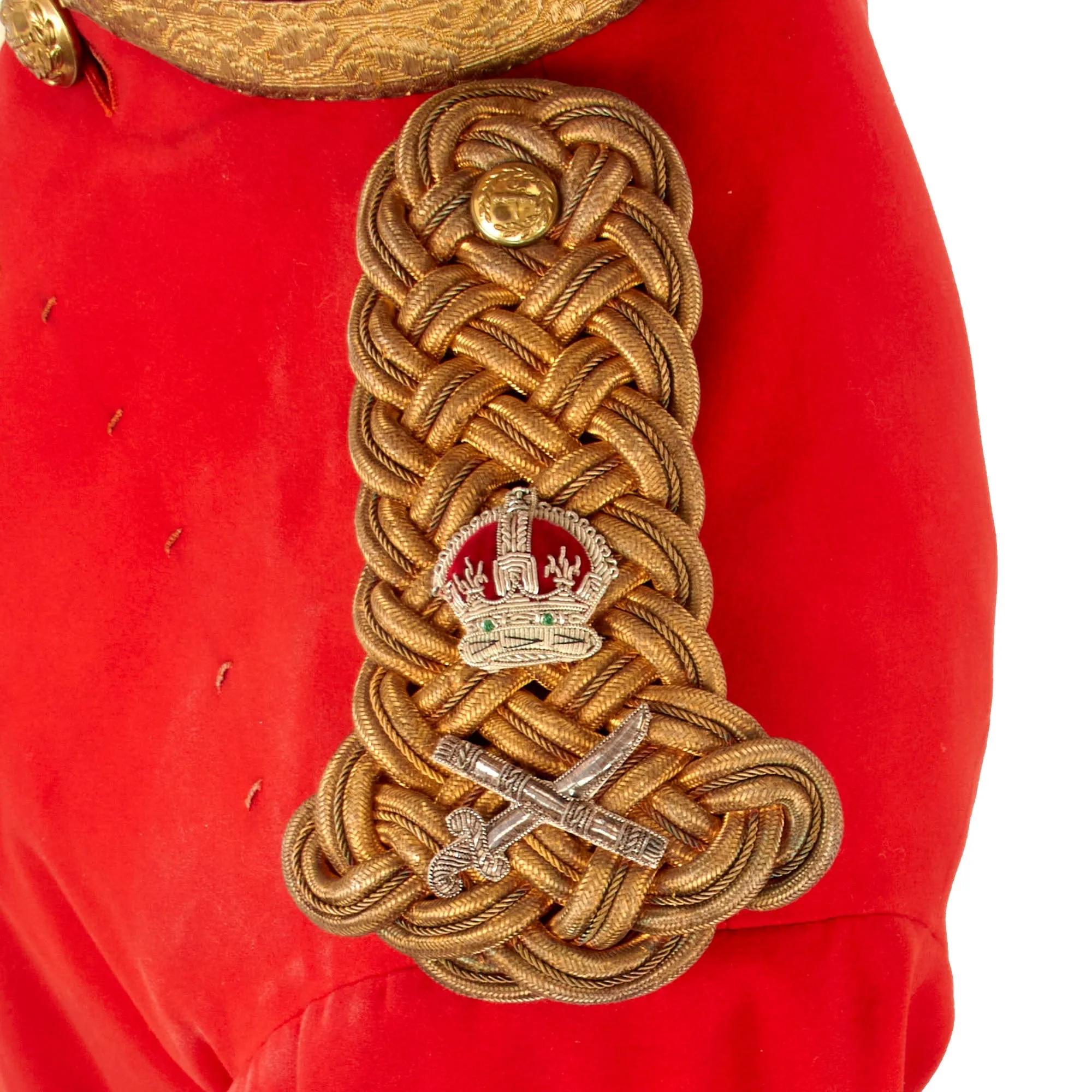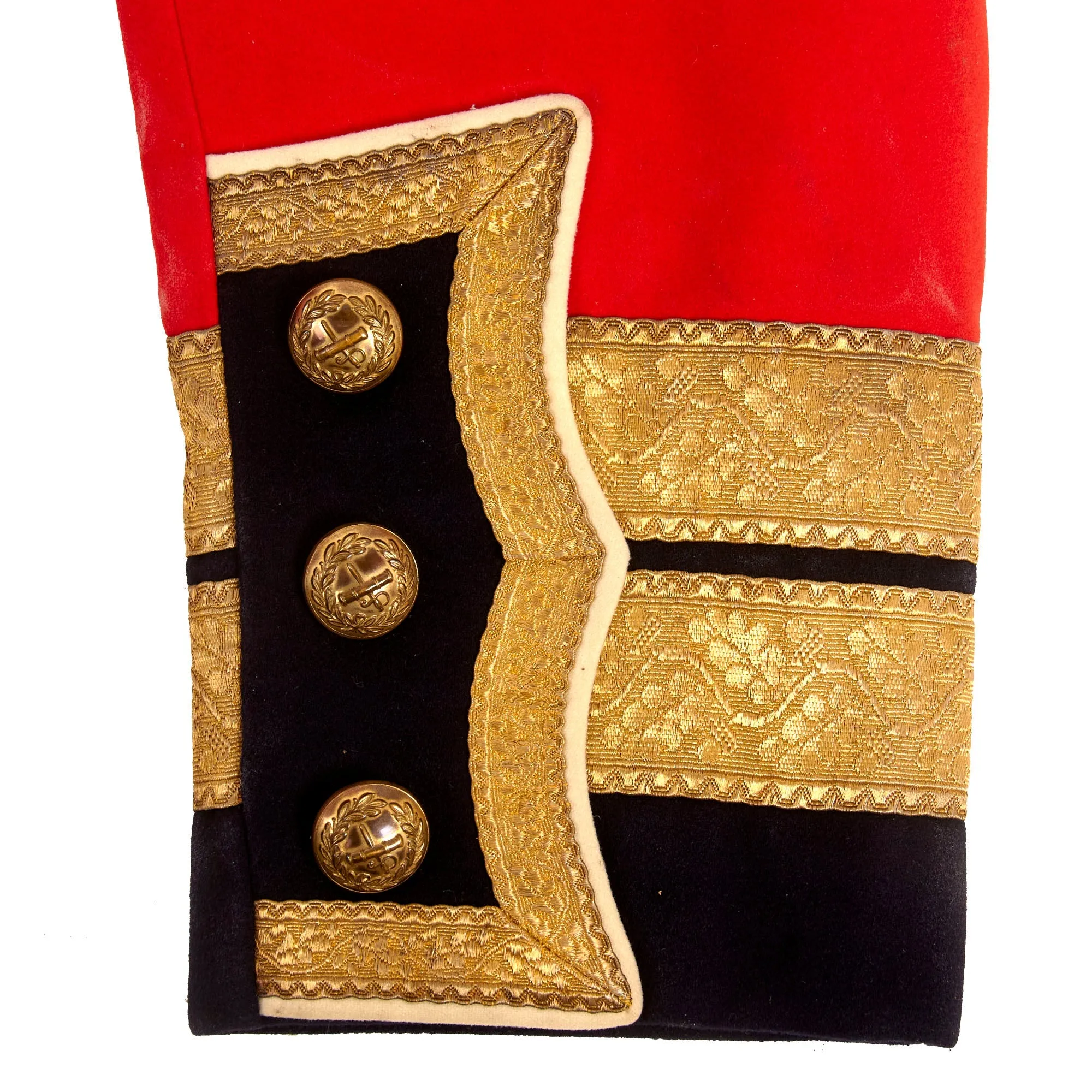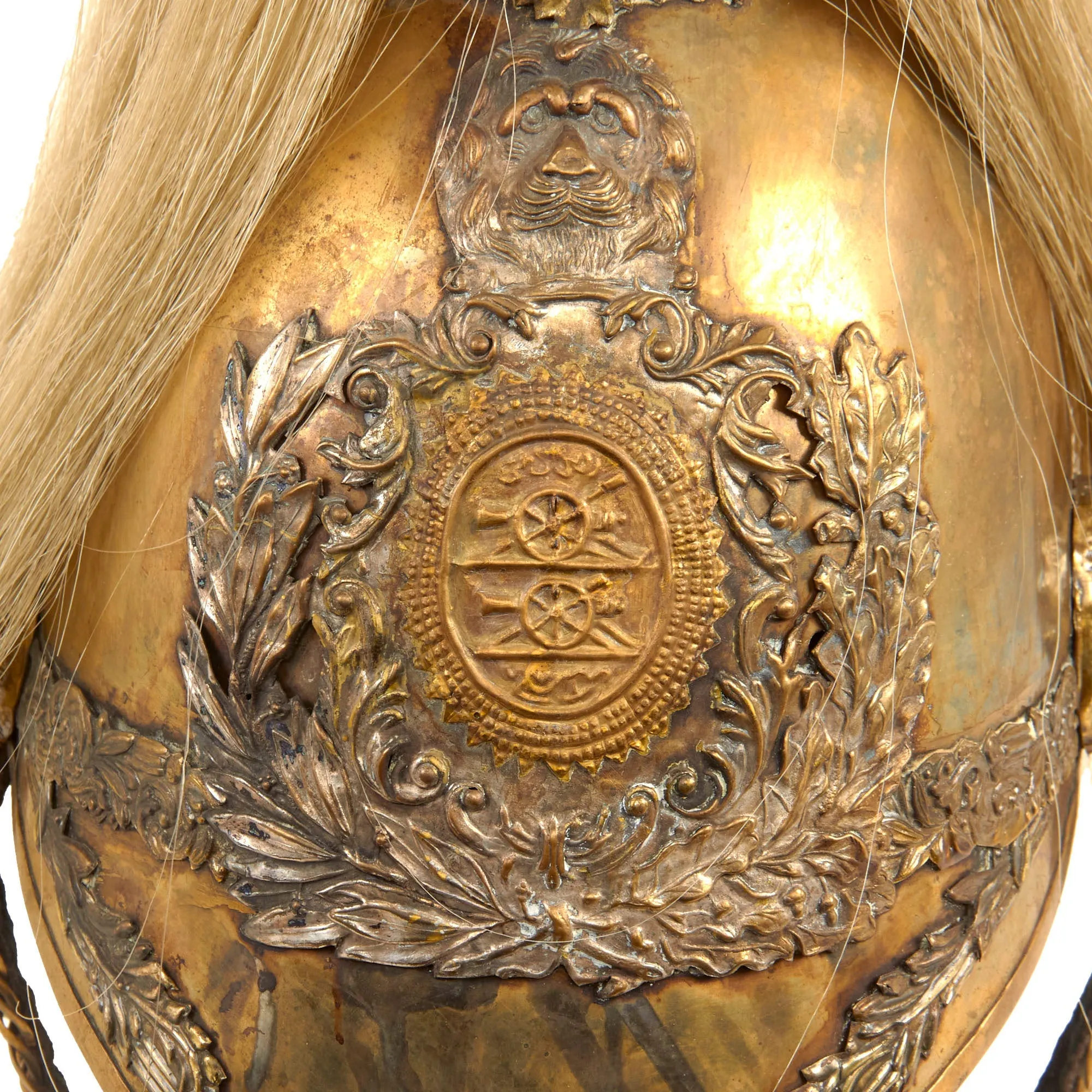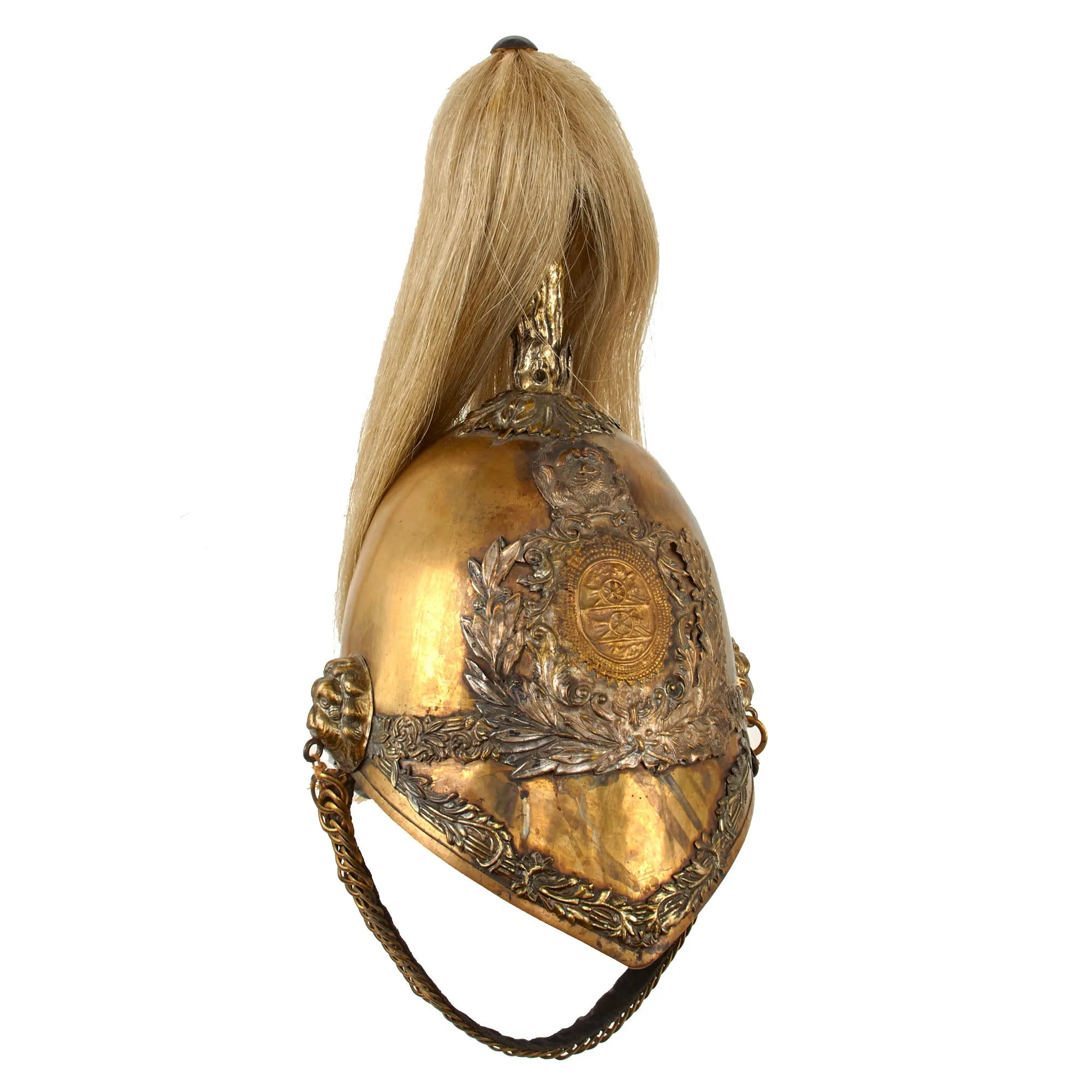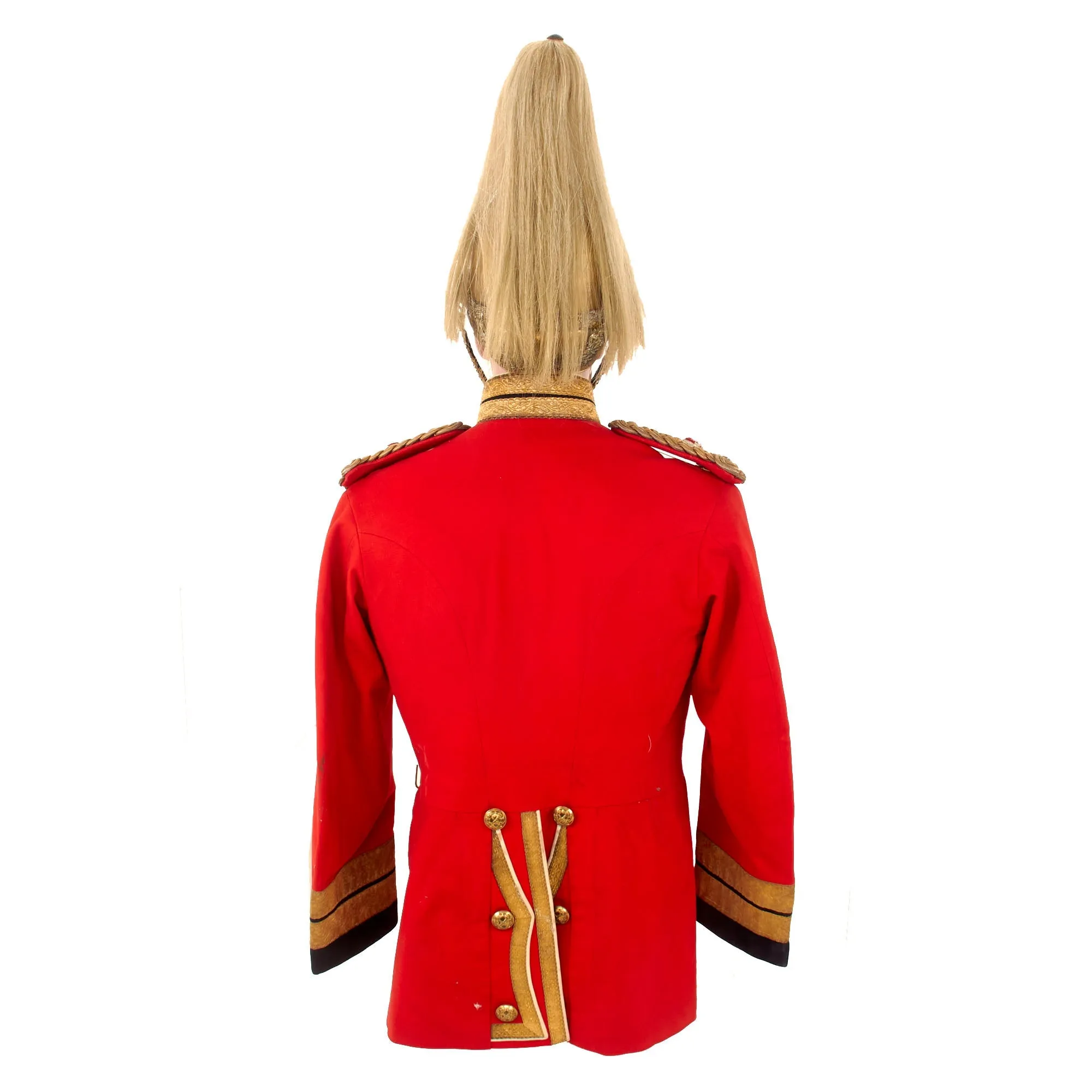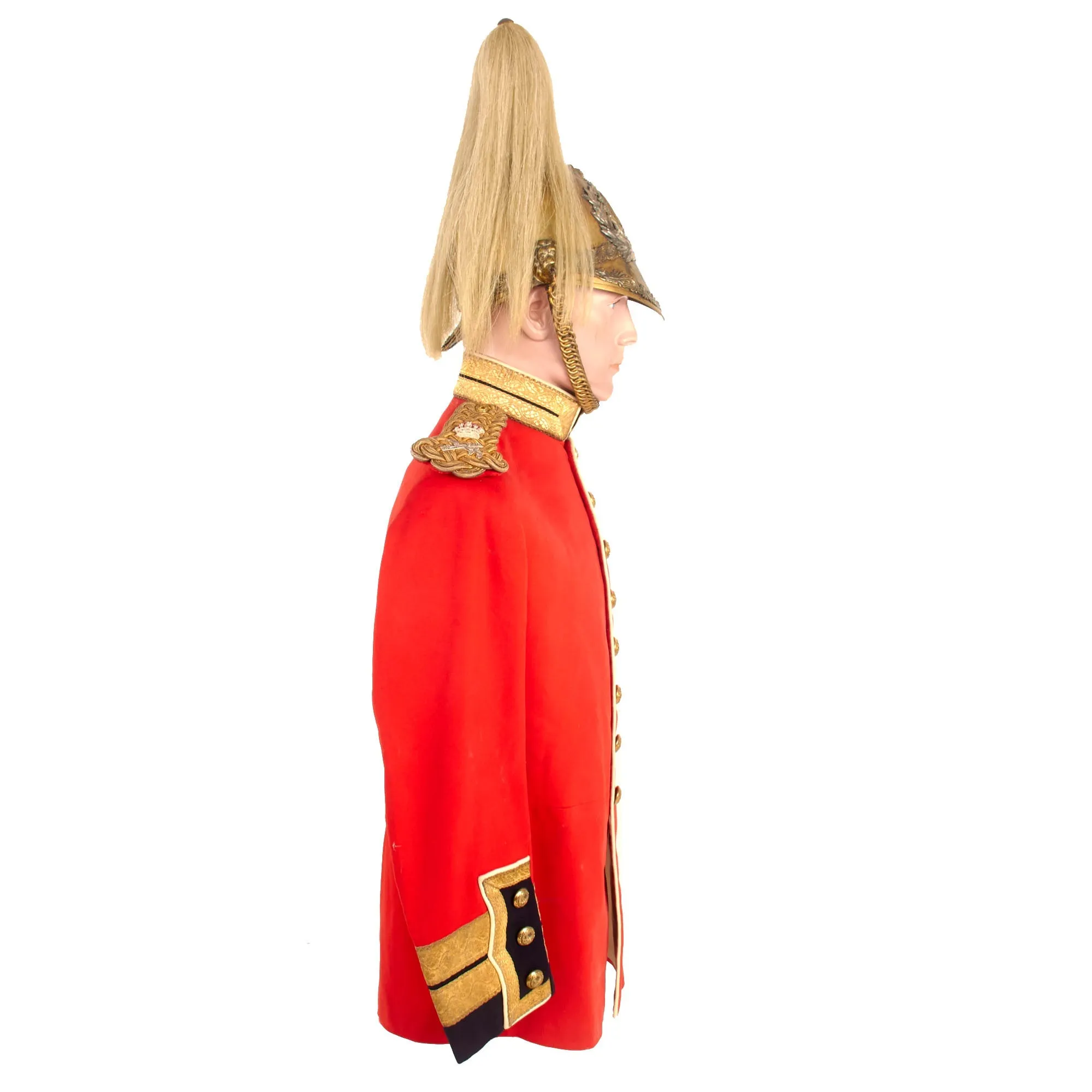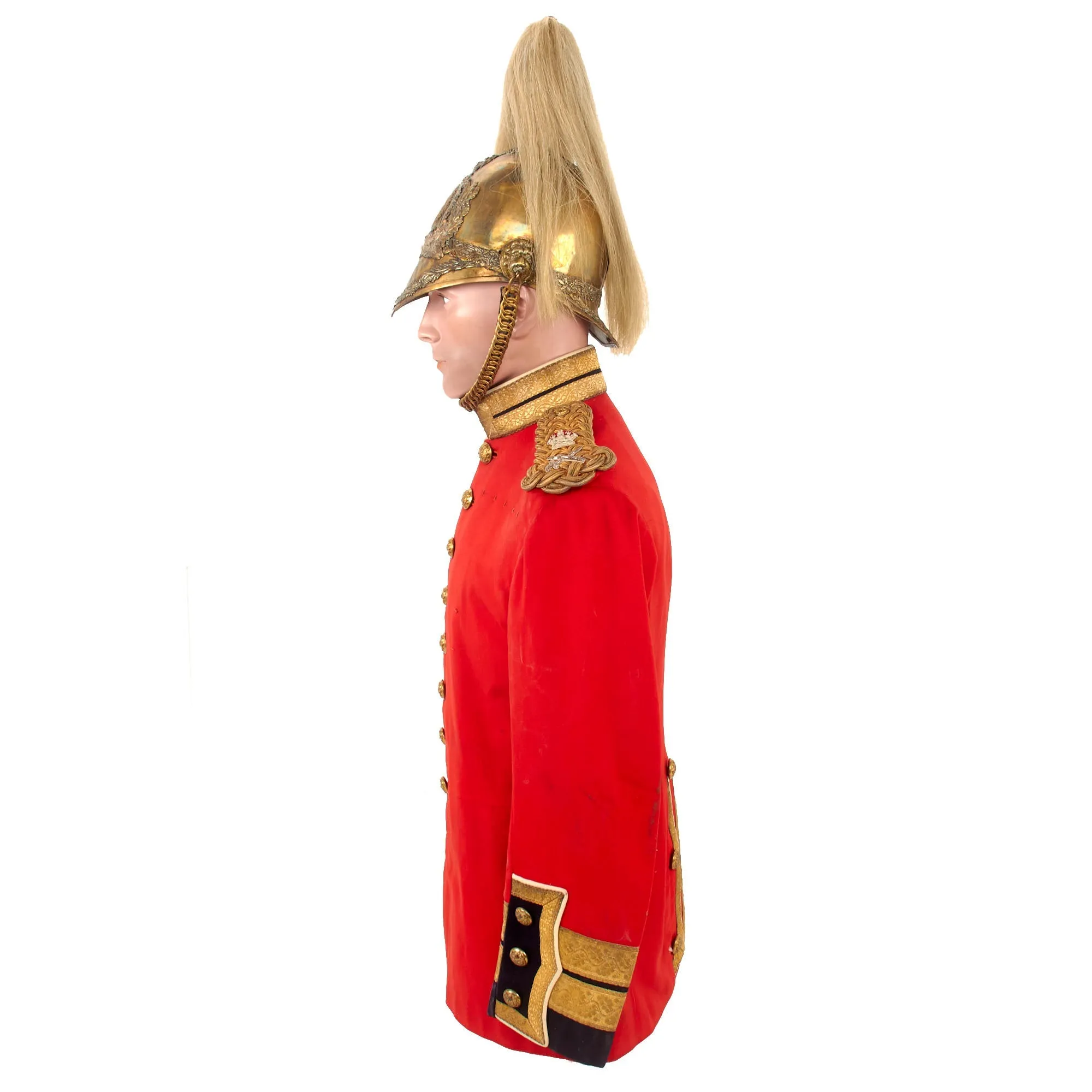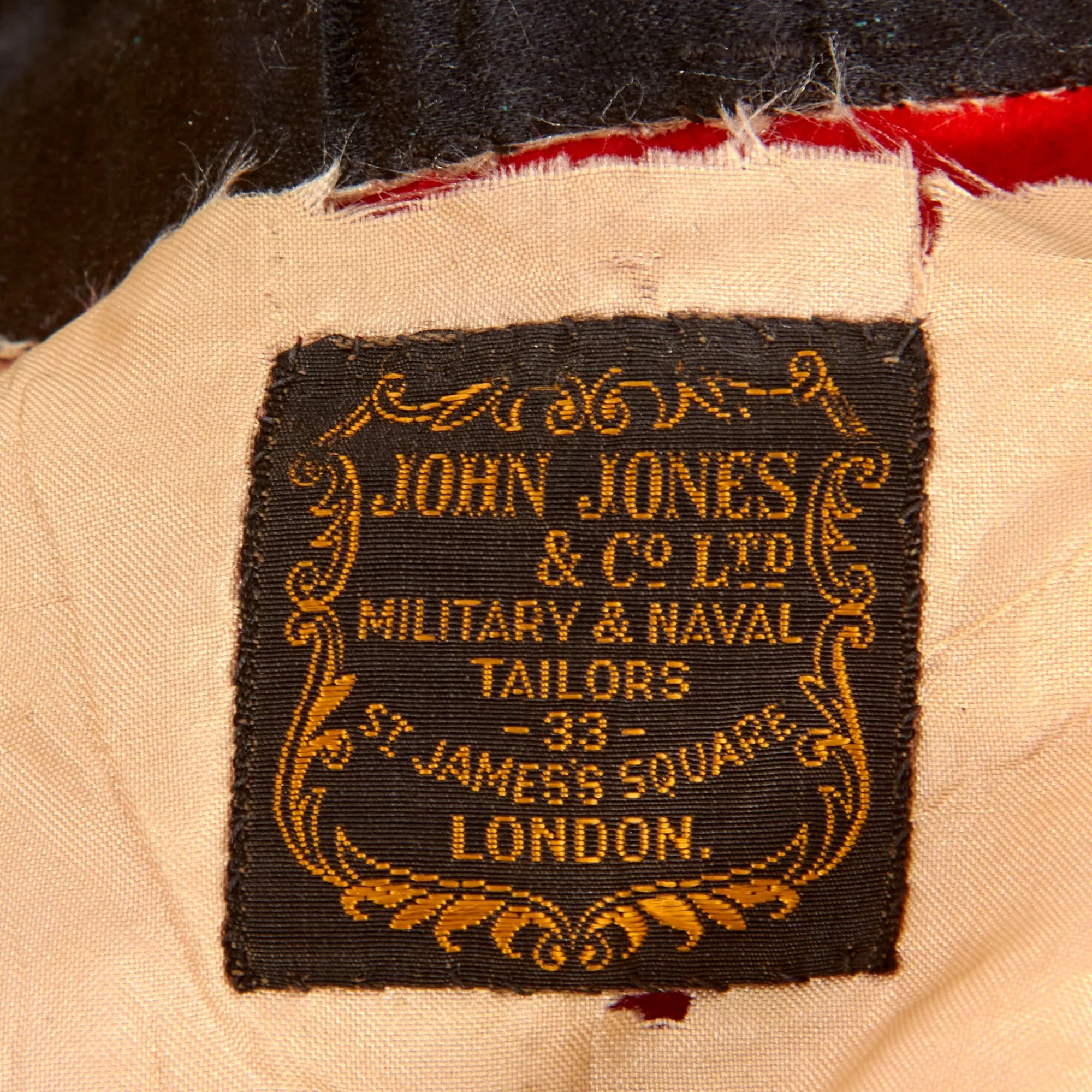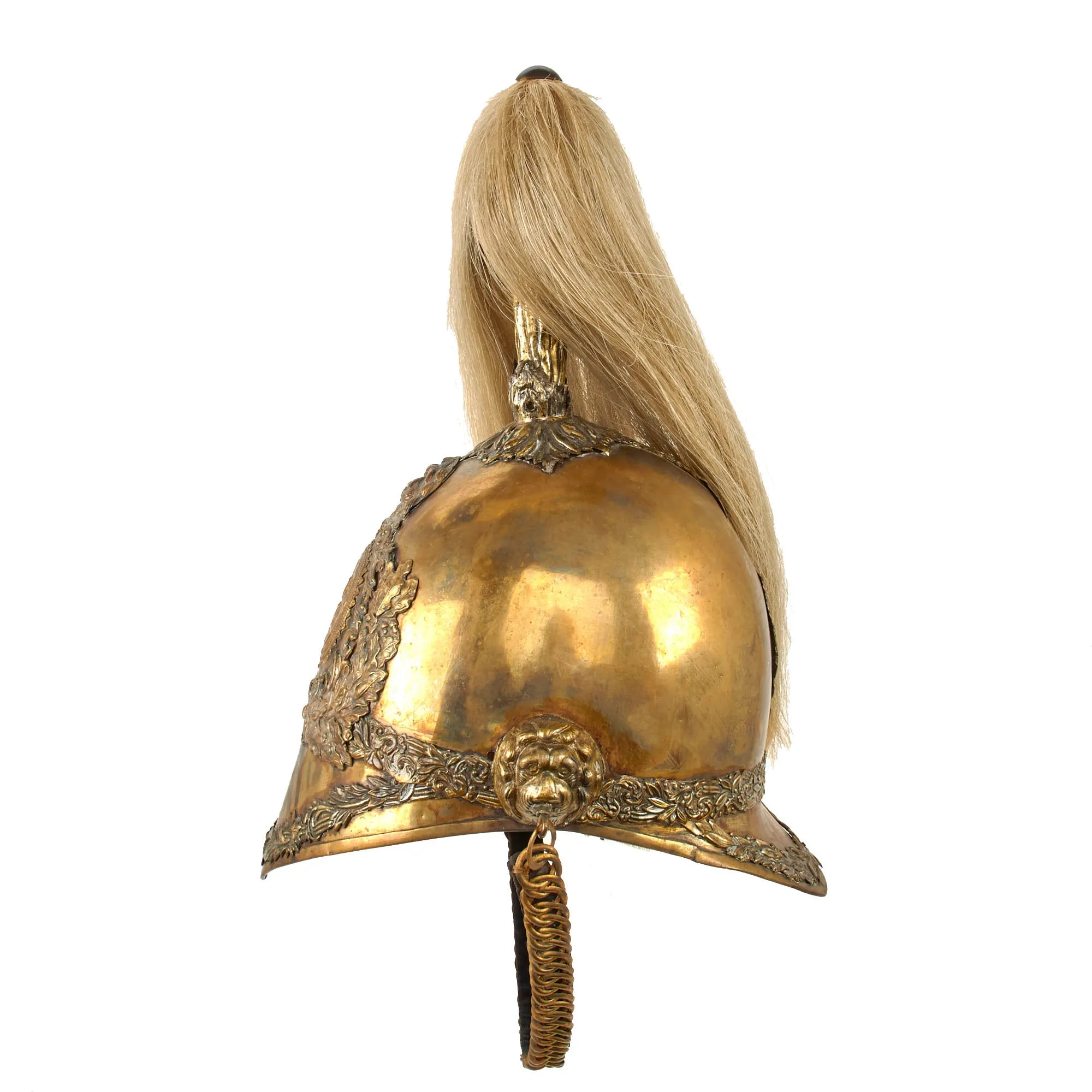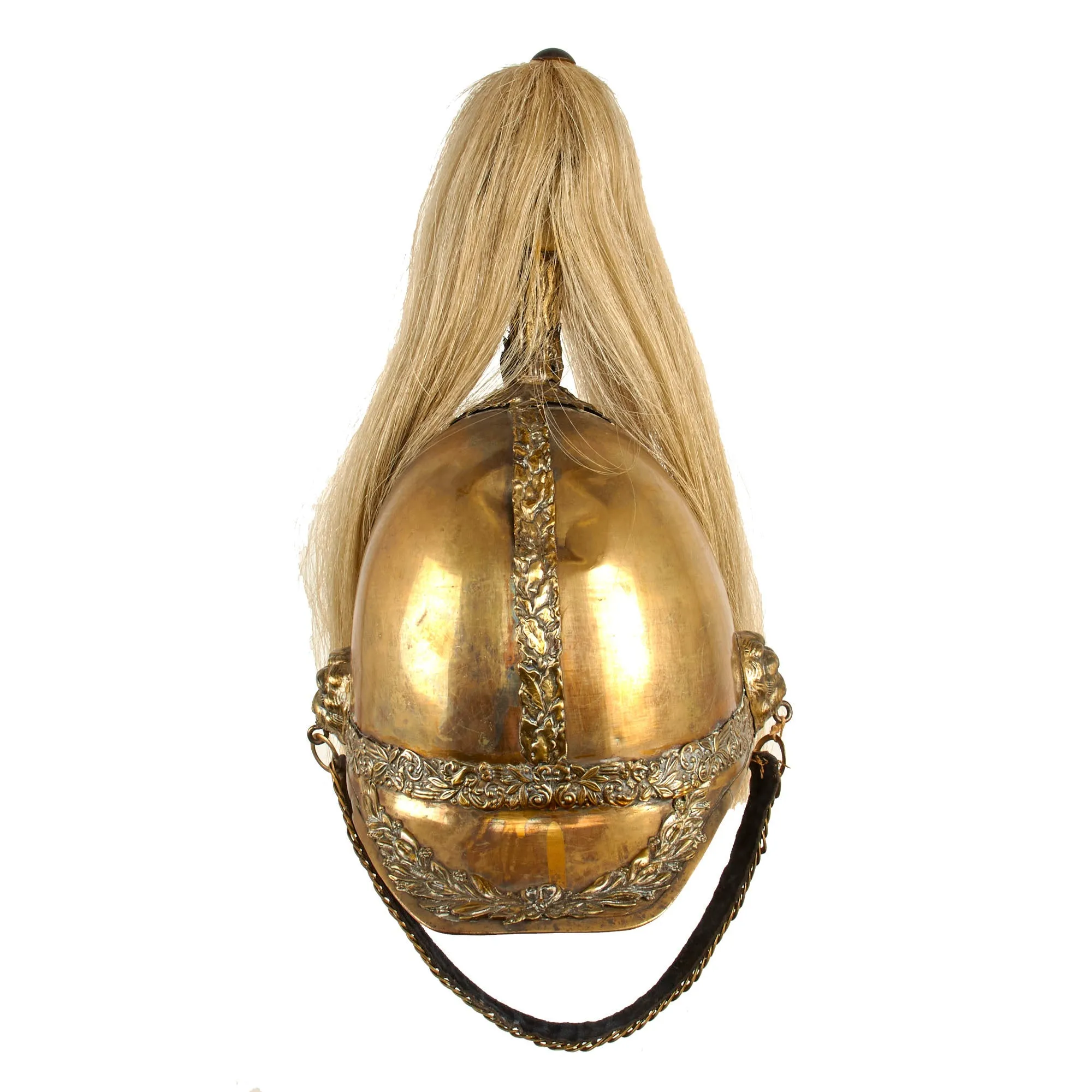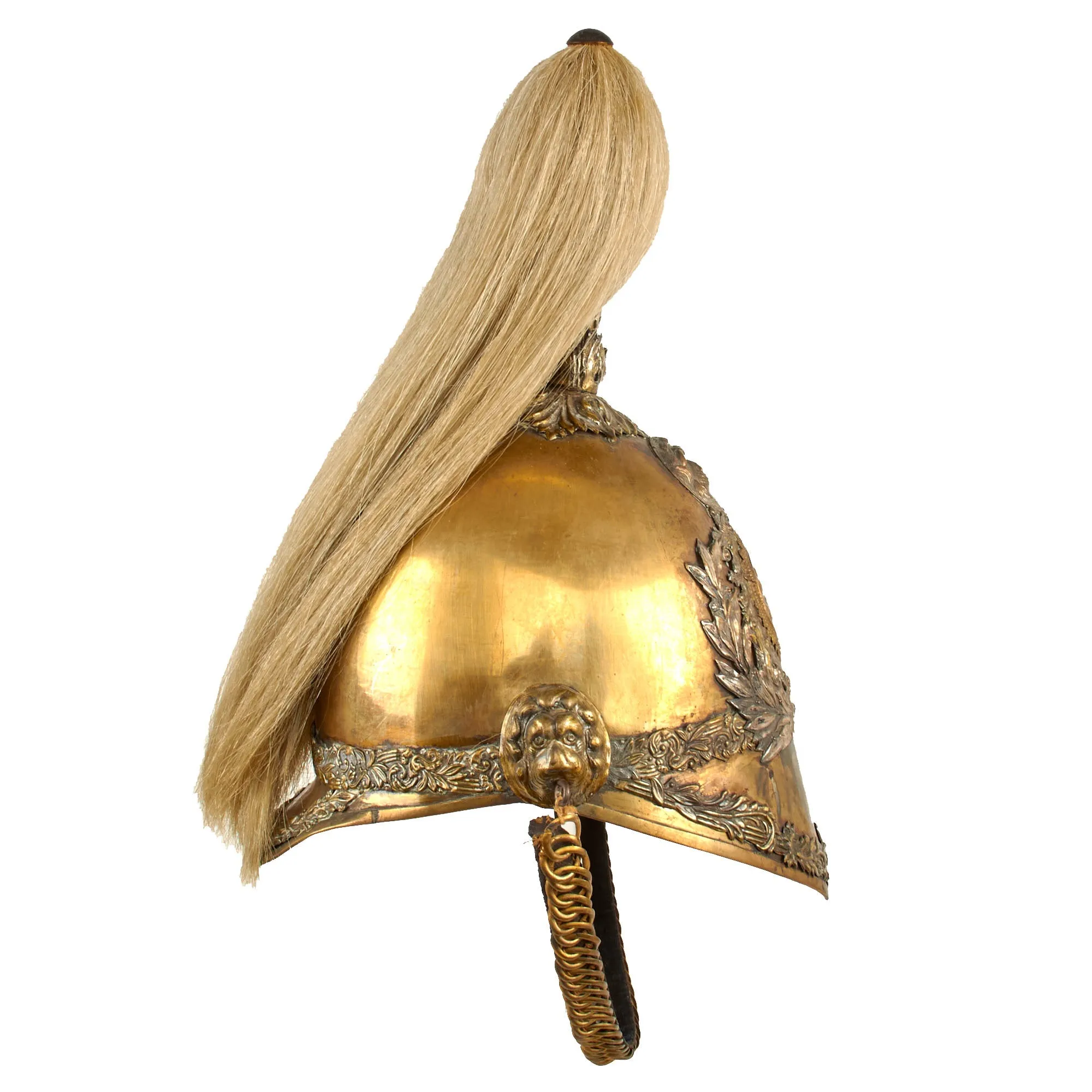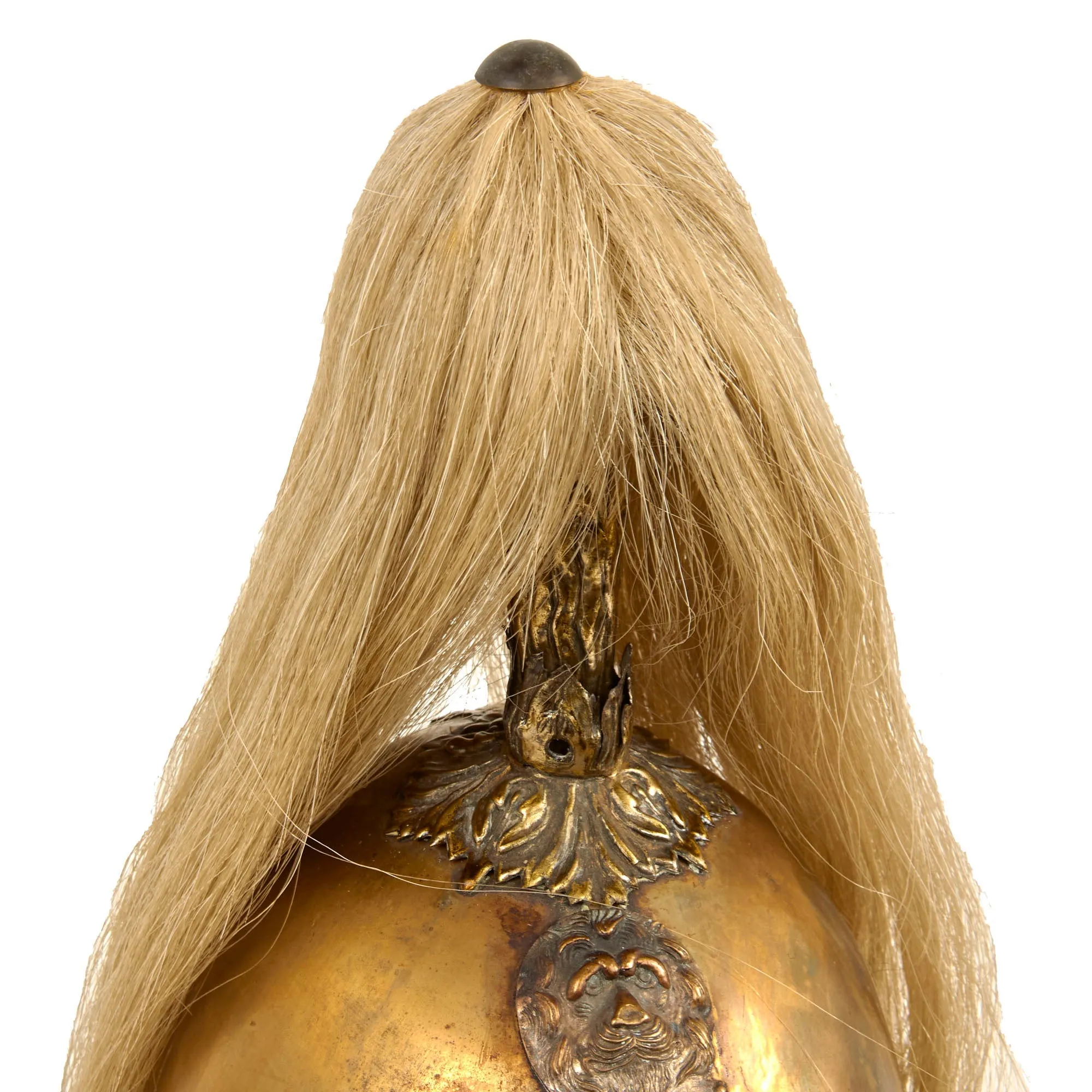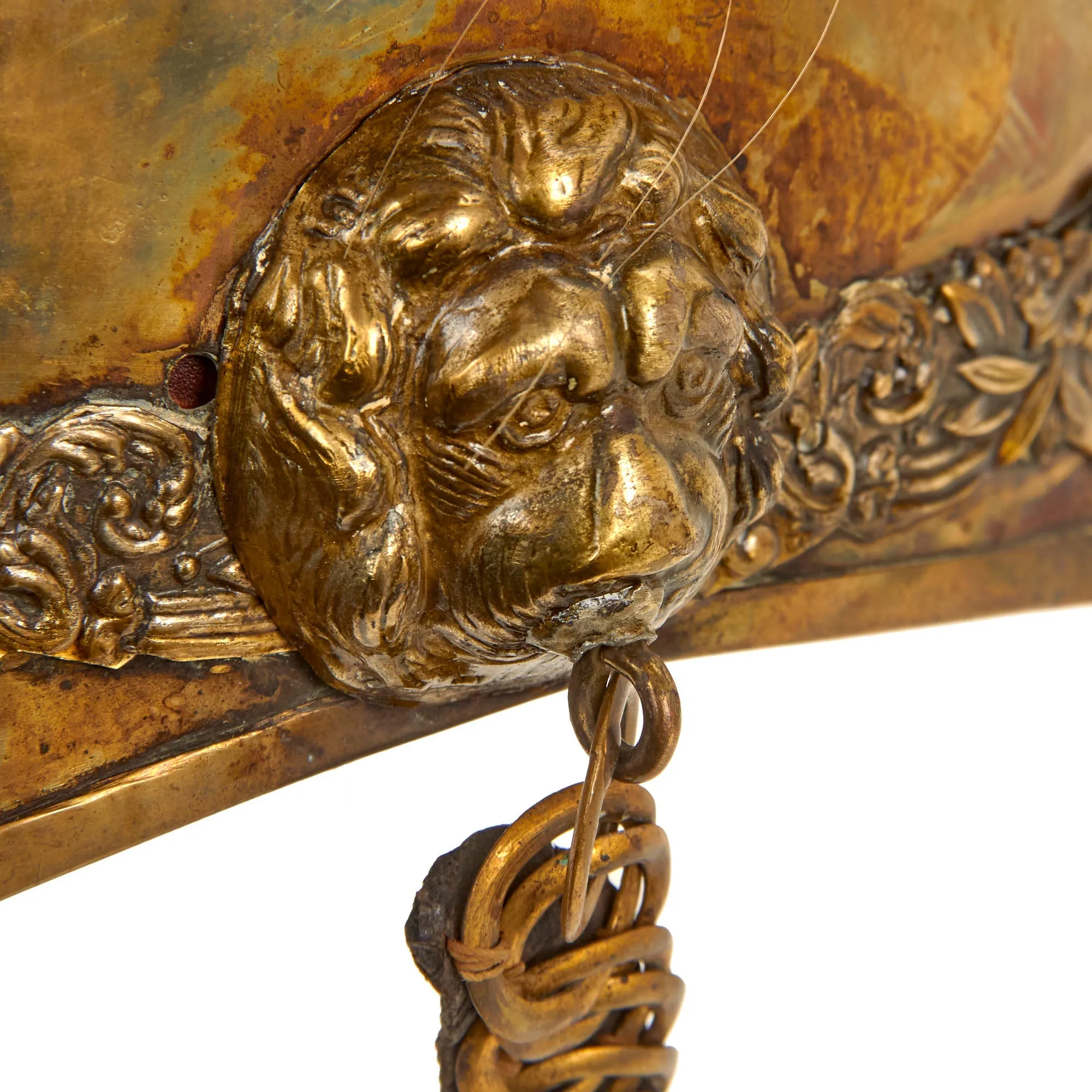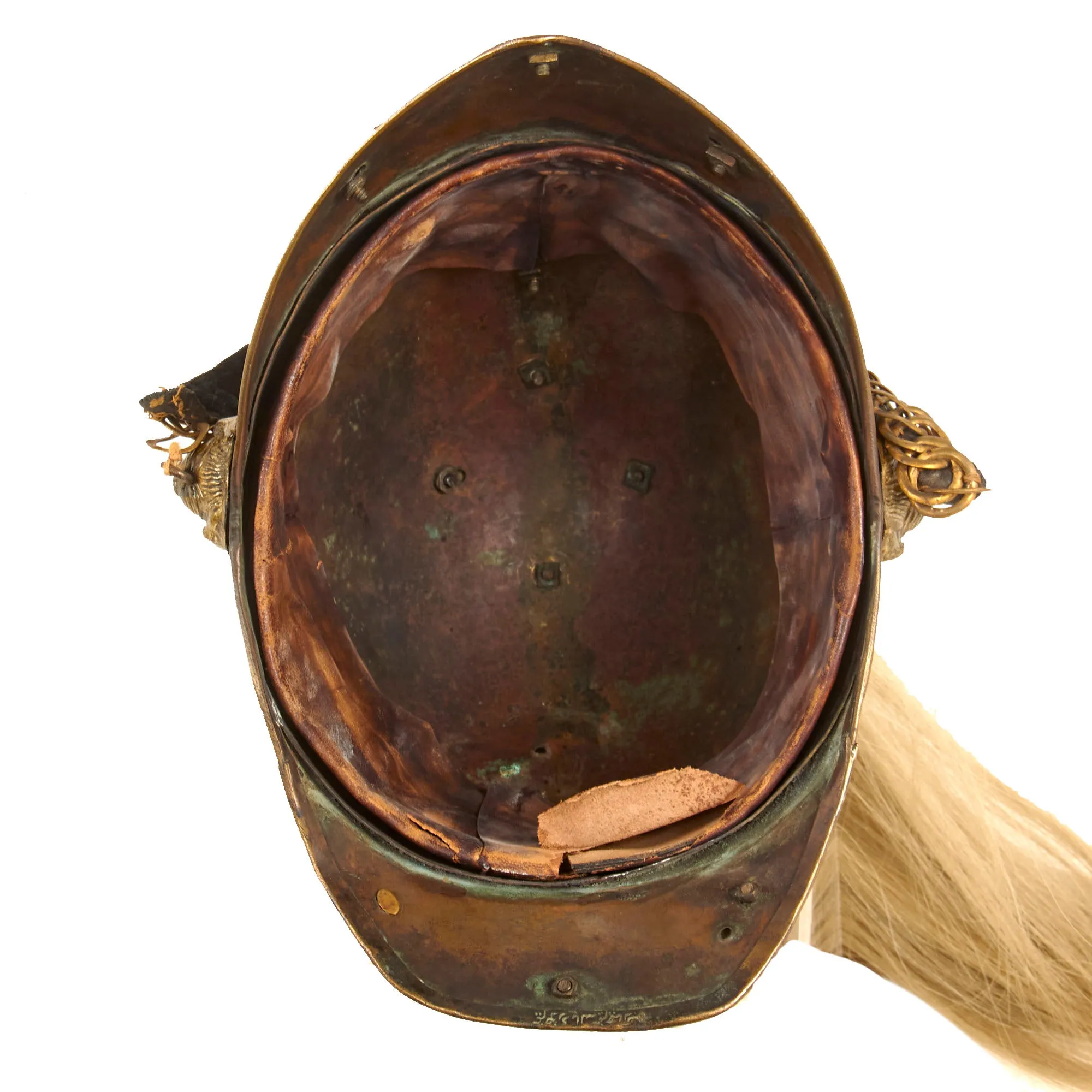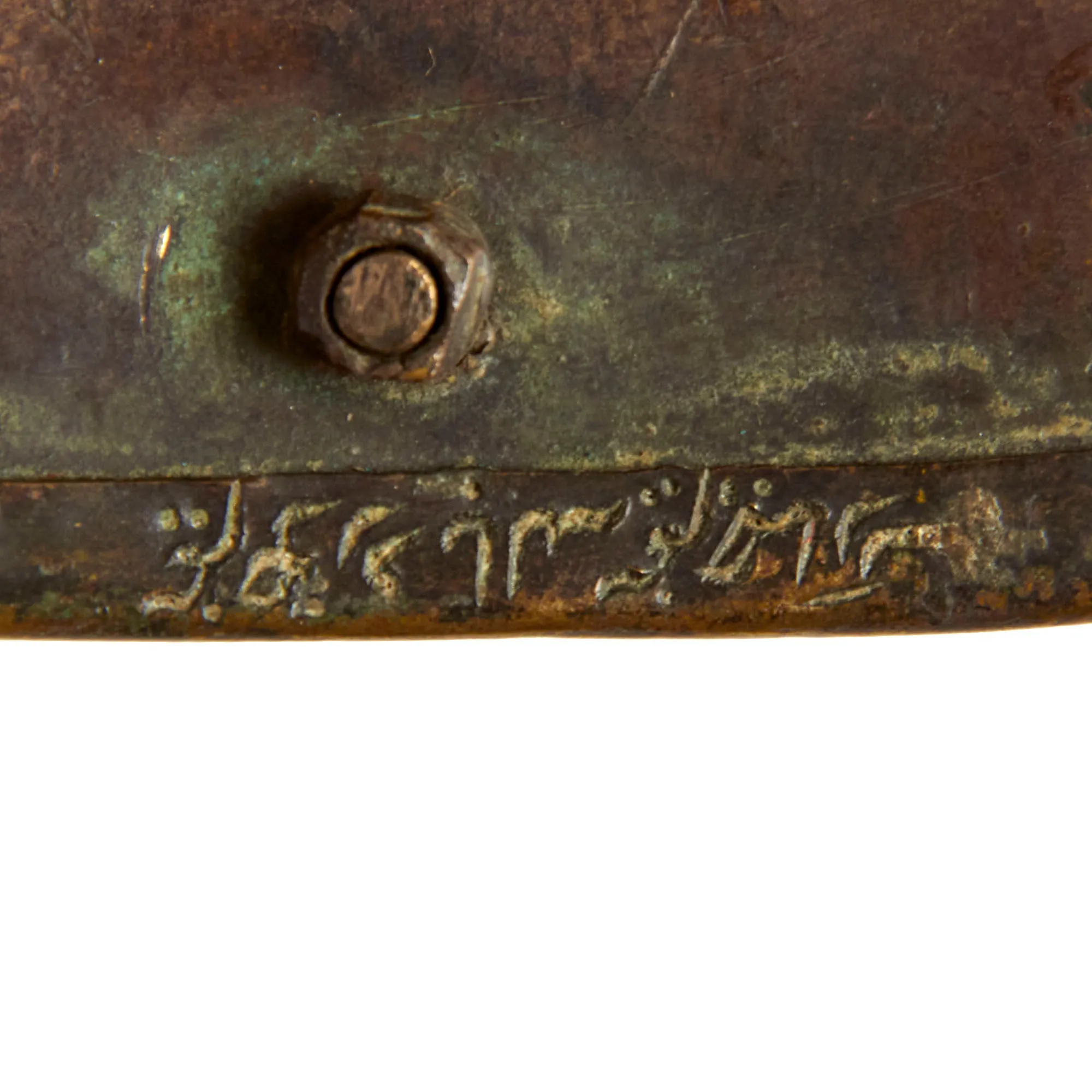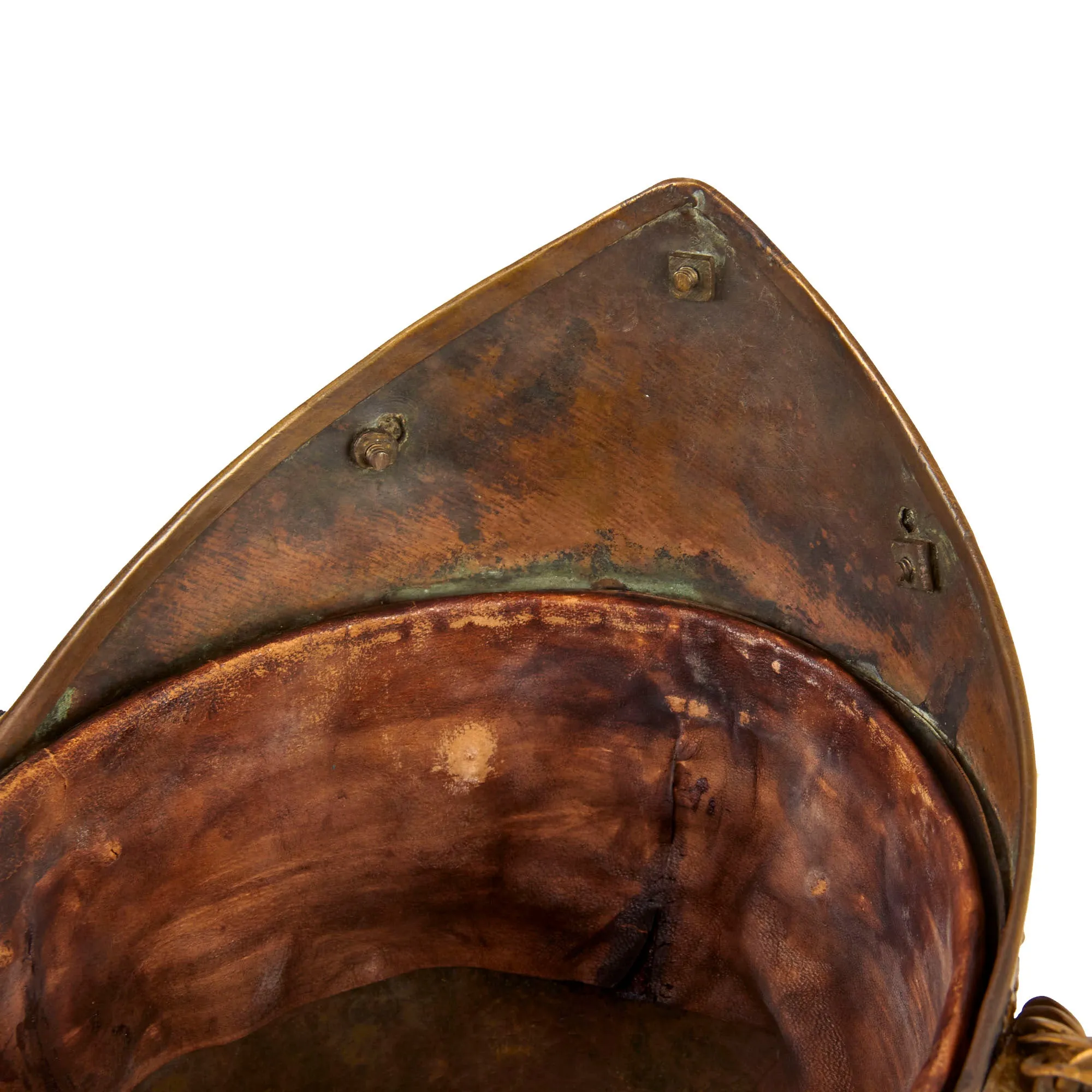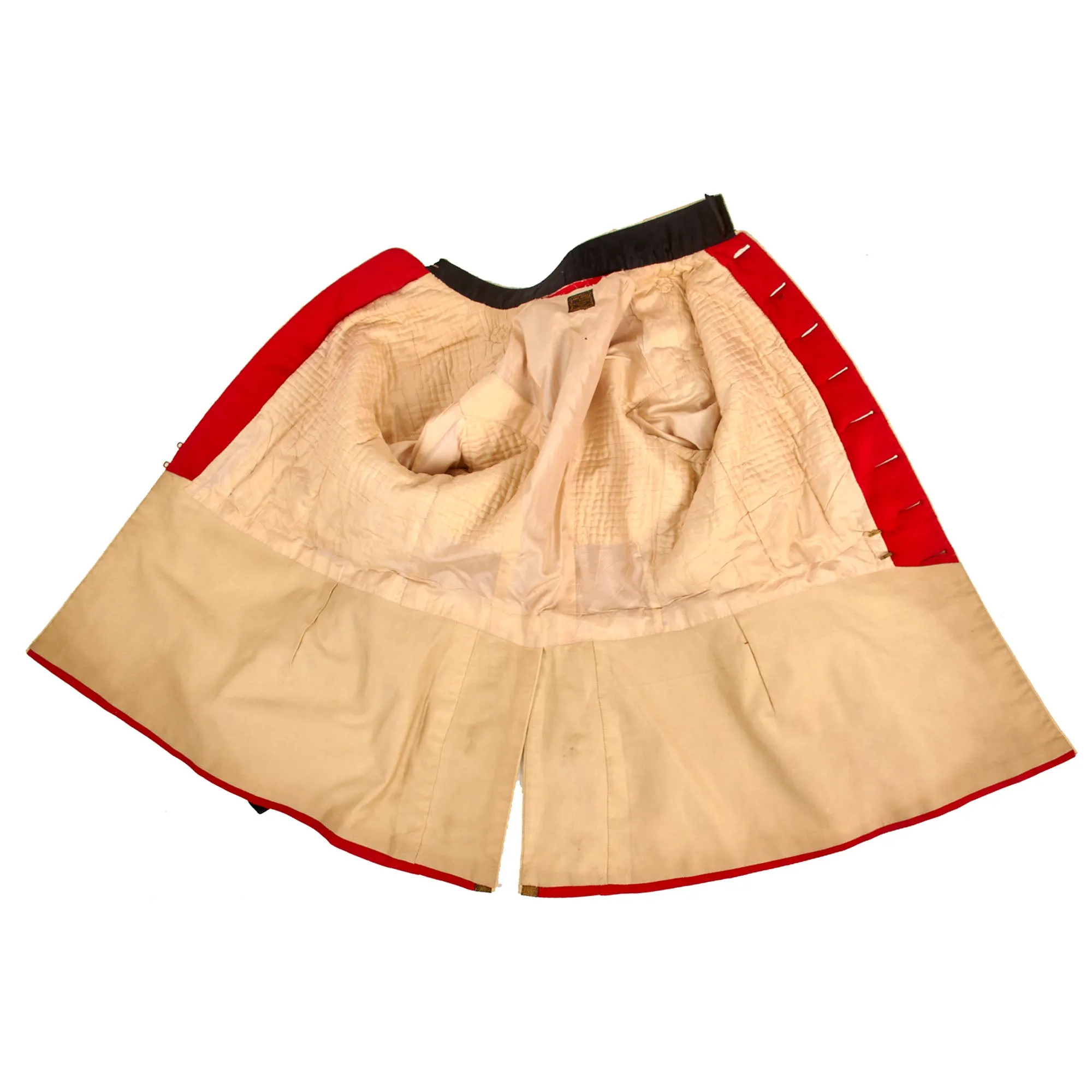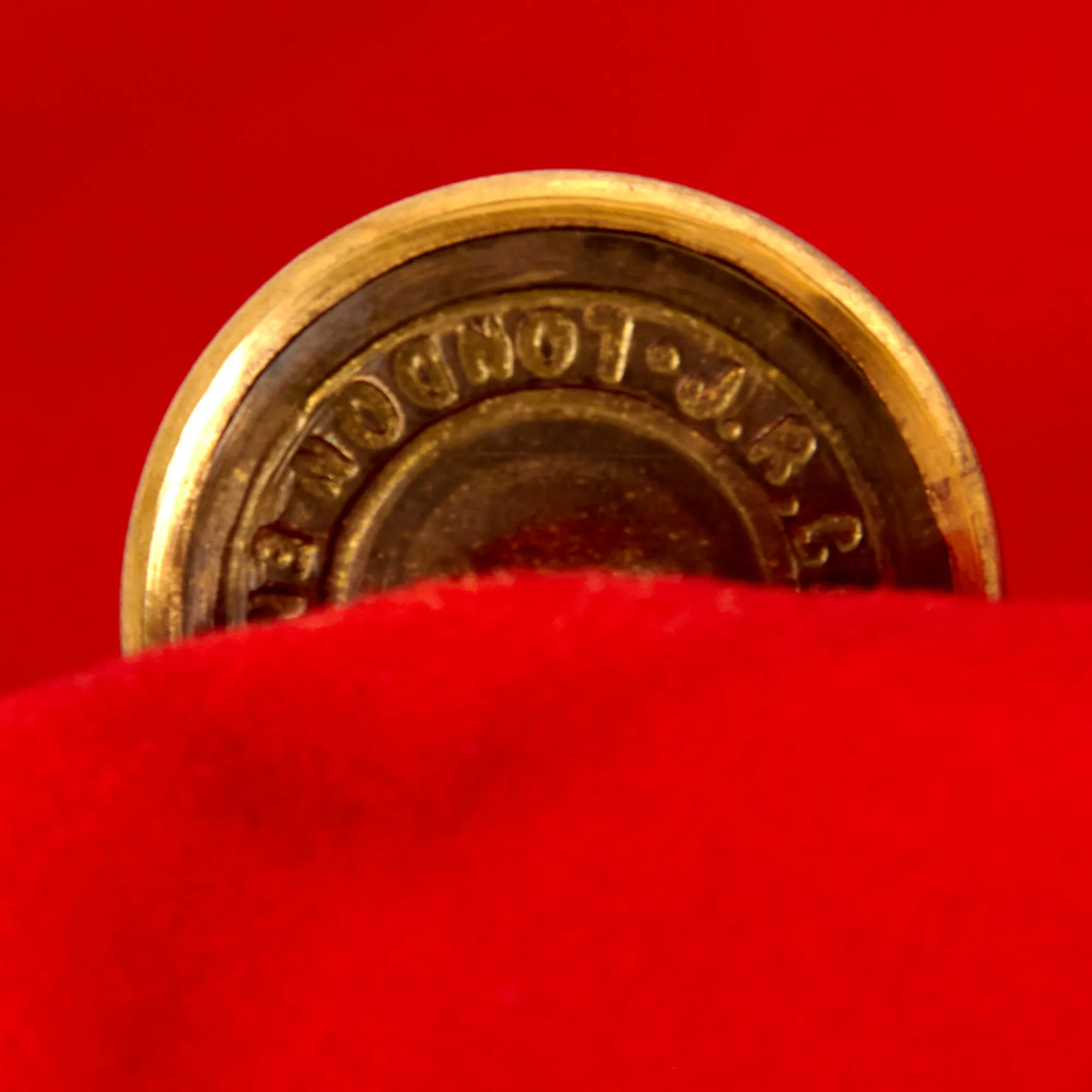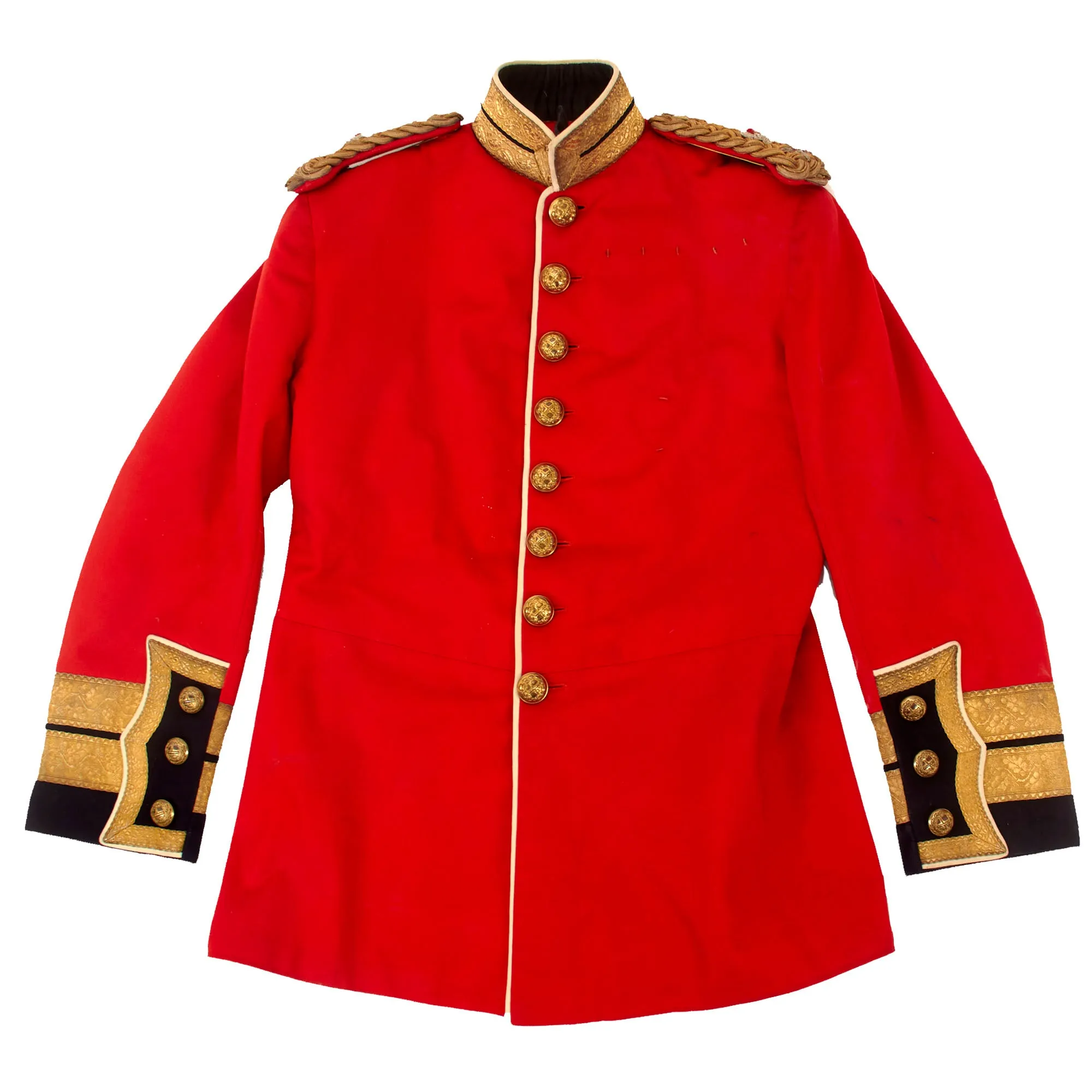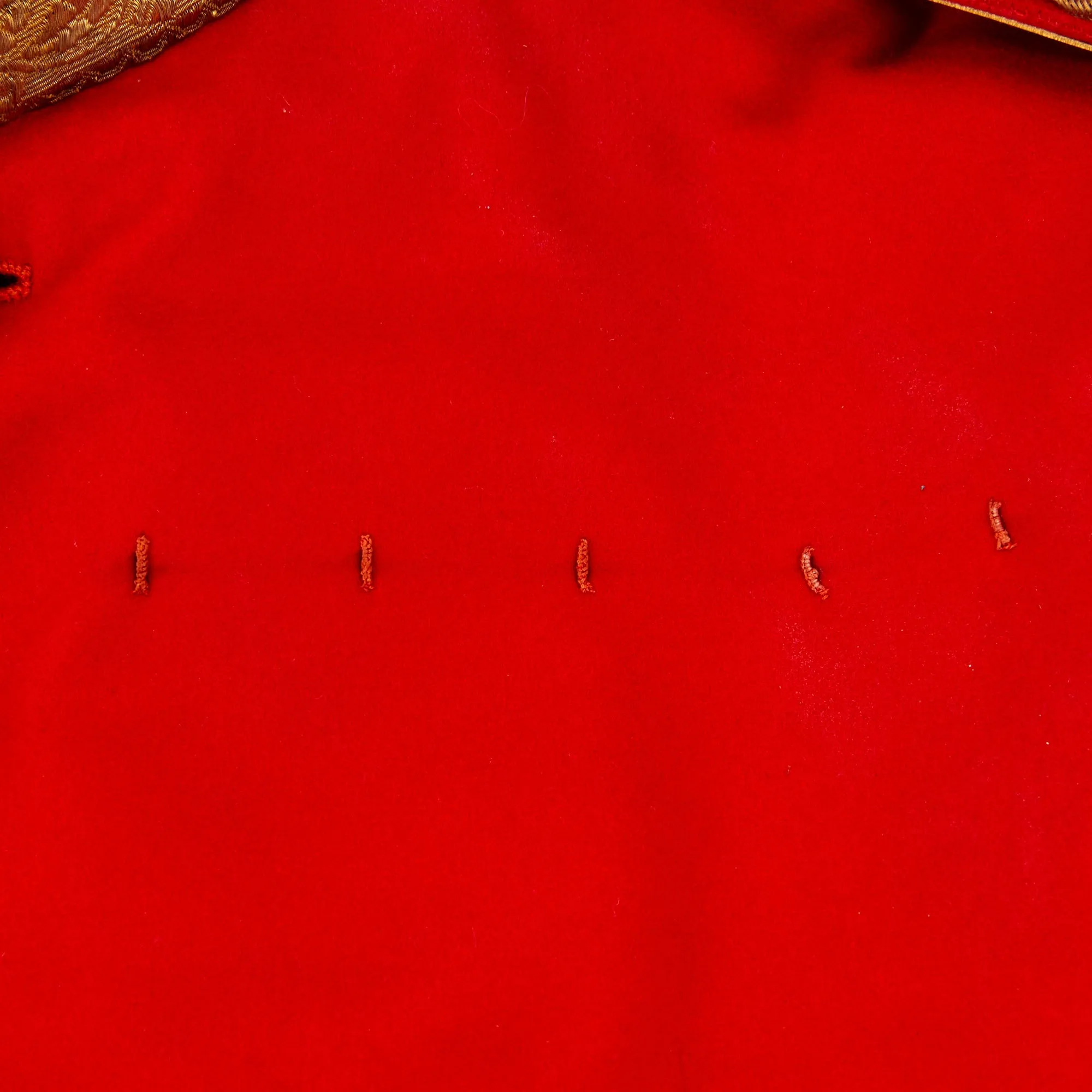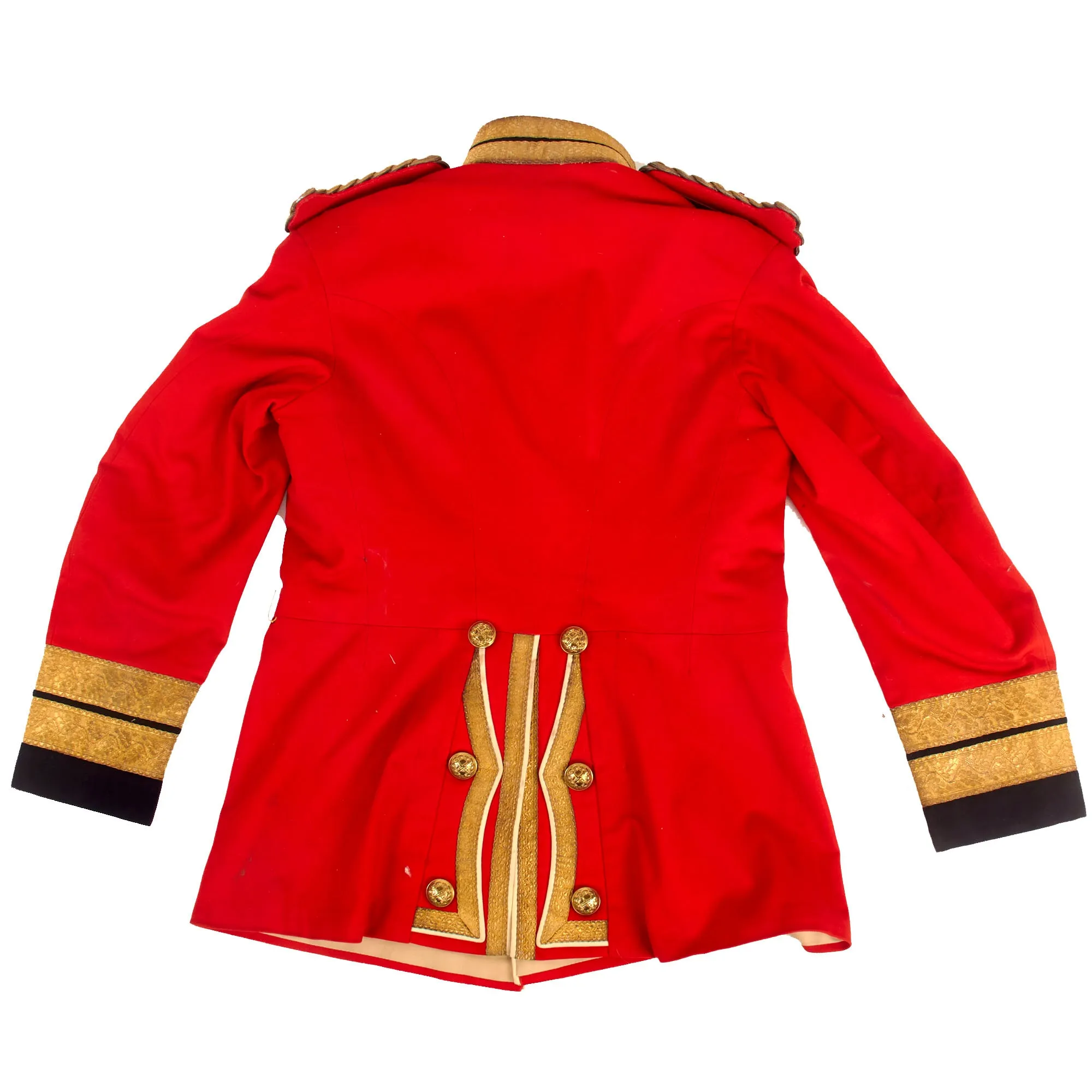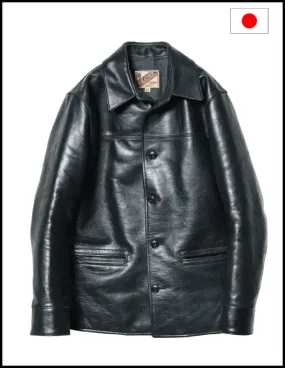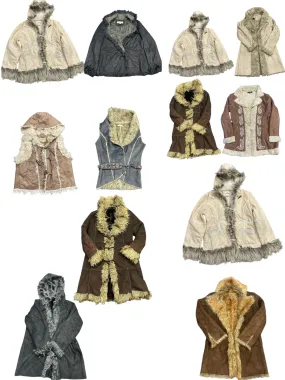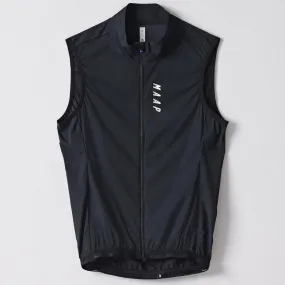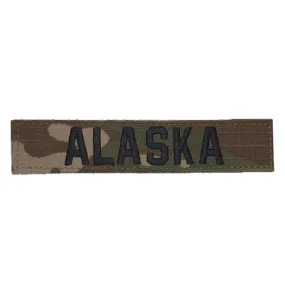Original Item: Only One Available. This uniform is named to Lieutenant General Sir Bertrand Richard Moberly (K.C.I.E., C.B., D.S.O.) who served most of his career within the British Army in India. Fortunately, we were able to find a photograph of Lt. Gen. Moberley wearing this exact same uniform! Be sure to go through the photo section in order to see it, the original is not included as we discovered this on the internet. Another thing we are fortunate enough to include is a packet of research from the AAF Tank Museum where it was part of the viewable collection.
The tunic is a fine example of a scarlet coat and is constructed of kersey wool with a cream colored silk lining. The coat is secured by 7 buttons with matching buttons on the shoulders and breast pockets. The shoulder boards retain the correct insignia and crown pertaining to the rank of Lieutenant Colonel. There is no extensive damage present though the interior lining does have tearing present.
Included in the grouping is his late Victorian era P-1871 brass helmet. Victorian Britain was the age of Empire. The industrial revolution provided the technology and equipment while the military provided the victories. Britain expanded to dominate the world and pomp and glory became the order of the day.
This Helmet is the Pattern of 1871 and was in use for the remainder of Queen Victoria's reign. Complete with the original leather lining the only drawback is that leather backing to the brass ringed chin scales has become un-stitched, which could be repaired with very little effort if one so decided.
The brass peak and bowl showing some slight dents or distortions certainly commensurate with the age making this a very rare helmet to find and ready to display. All components are original, and on the whole, this helmet is completely original, untouched in great service used condition. There is staining and tarnishing present on the helmet, a reminder of its long service life.
Lieutenant General Sir Bertrand Richard Moberly (K.C.I.E., C.B., D.S.O.) career narrative (included) is as follows:
-Born 15 October 1877.
-Second Lieutenant Bertrand Richard Moberly, Gentleman Cadet from the Royal Military College appointed to the Indian Staff Corps, dated 4 August1897. Source: London Gazette 3 August 1897
-Promoted Lieutenant 4 November 1899. Source: Army Lists 31 December 1927
-Staff Officer Somaliland Field Forces 5 March 1903. Source: Army Lists 31 December 1927
-Lieutenant B.R. Moberly, of the 56th Infantry (Frontier Force) promoted to Captain, effective 4 August 1906. Source: London Gazette 13 November 1906
-Staff Captain, India 7 January 1909 to 27 June 1909. Source: Army Lists 31 December 1927
-Captain B.R. Moberley, 56" Punjabi Rifles (Frontier Force) Indian Army, appointed as 2nd Grade, General Staff Officer. Source: The London Gazette 23 July 1915.
-Captain B.R. Moberly, 56 Punjabi Rifles (Frontier Force) Indian Army, appointed either Deputy Assistant Adjutant or Quartermaster General, effective 24 December 1914. Source: London Gazette 17 August 1915.
-Captain B.R. Moberly, 56 Punjabi Rifles (Frontier Force) Indian Army, appointed Staff Captain, effective 21 September 1914. Source: London Gazette 17 August 1915.
-Captain B.R. Moberly, 56" Punjabi Rifles (Frontier Force) Indian Army, appointed as 2nd Grade, General Staff Officer. Source: London Gazette 18 September 1915. (This data duplicates earlier data but uses a different spelling of his surname and may not have been noted by The London Gazette.)
-Promoted Major 4 August 191(5).
-Major B.R. Moberly, 56th Punjabi Rifles (Frontier Force), decorated as Companion of the Distinguished Order, dated 29 October 1915. Source: London Gazette 29 October 1915.
-Promoted Lt. Col. (Brev.) 3 June 191(8).
-Promoted Colonel (Brev.) 3 May 1921.
-Decorated with the Order of the Commander of the Bath at some point prior to May 1937, subsequently using initials 'C.B. to indicate decoration.
-Maj. Gen. B.R. Moberley, C.B., D.S.O., Indian Army, Commander, Lahore District, appointed by His Majesty the King, Knight Commander to the Most Eminent Order of the Indian Empire, effective 11 May 1937. Source: London Gazette 11 May 1937.
-Maj. Gen. B.R. Moberley noted as Deputy Chief of the General Staff, Headquarters Staff of the British Army in India. Source: Army List, July 1935, corrected to 29 June 1935.
-Lt. Gen. B.R. Moberly appointed Quartermaster General, Headquarters Staff of the British Army in India effective 4 April 1938. Source: Army Lists, July 1938, corrected to 29 June 1938, and London Gazette 22 April 1938.
-Lt. Gen. B.R. Moberly, K.C.I.E., C.B., D.S.O., Indian Army, noted as being promoted to Lt. Gen. on 1 April 1938. Source: Army Lists, January 1940, corrected to 25 December 1939 and London Gazette 8 April 1938.
-Appointed Knight of the Realm at some point 1939-1940, subsequently referred to as "Sir'. Source: London Gazette 5 January 1940.
-Lt. Gen. Sir B.R. Moberley noted as retaining position as Quartermaster General, Headquarters Staff of the British Army in India. Source: Army Lists, March 1940, corrected to 25 February 1940, and April 1940, corrected to 25 March 1940.
-Lt. Gen. Sir Bertrand R. Moberley, K.C.I.E., C.B., D.S.O., retires effective 16 March 1940. Source: London Gazette 19 April 1940.
-Correction and notation of prior Christian name and Surname spelling errors, effective 5 January 1940. Source: London Gazette 26 April 1940.
-Lt. Gen. Sir Bertrand R. Moberly, K.C.I.E., C.B., D.S.O., having attained the age limit of liability to recall, ceases to belong to the Reserve, effectively retiring 15 October 1944. Aged 67 years. Source: London Gazette 27 October 1944.
An incredible uniform grouping with great research potential. Comes more than ready for further research and display.
Approximate Tunic Measurements:
Collar to Shoulder: 10"
Shoulder to Sleeve: 23"
Shoulder to Shoulder: 17"
Chest width: 20"
Waist width: 18"
Hip width: 22"
Front length: 28"
Red coat (also spelled as "redcoat") or scarlet tunic was a military garment used widely, though not exclusively worn, by most regiments of the British Army, Royal Marines, and some colonial units within the British Empire, from the 17th to the 20th centuries. The scarlet tunic continues to be used into the 21st century, with several armed forces of the Commonwealth of Nations adopting them as their full dress and mess dress uniforms. The uniform and term "redcoat" may have originated in 16th century Tudor Ireland as a derogatory term for the British, as British soldiers in Lord Lieutenant of Ireland's army wore red coats, the first time English and Scottish soldiers under English command and later British collectively had a red uniform. The term was then brought to America and Europe by Irish emigrants.
From the mid-17th century to the 19th century, the uniform of most British soldiers (apart from artillery, rifles and light cavalry) included a madder red coat or coatee. From 1873 onwards, the more vivid shade of scarlet was adopted for all ranks, having previously been worn only by officers, sergeants and all ranks of some cavalry regiments.
The uniform came to us from the American Armoured Foundation, Inc. Tank and Ordnance Memorial Museum. The AAF Tank Museum was a living memorial dedicated to the Tank and Cavalry soldiers of the world. Before 1981 some of the artifacts that make up the AAF Tank Museum was a private collection belonging to Mr. William Gasser. Mr. Gasser felt that his collection would be beneficial in educating present and future generations to the sacrifices made and the technologies gained during war. Therefore, in 1981 the AAF Tank Museum was established as a non-profit charitable organization, and Mr. Gasser's donated his private collection to the Tank Museum. Mr. Gasser is still active as Volunteer Director and Curator of the Tank Museum and his knowledge of military history has been a great asset to the museum. Unfortunately after 20 years of operation it had to close its doors, which is when this uniform was acquired.




